Like humans, animals need sleep to function optimally. Snails are no exception. These gastropods sleep in bouts and may hibernate over the winter. The same goes for aquarium snails — if you look closely, you can see them resting with their tentacles partly withdrawn.
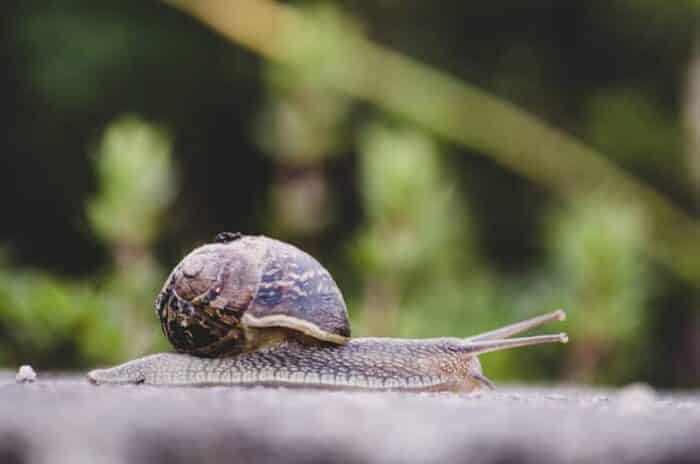
So, how long do snails sleep? Contrary to what you may have heard, the answer isn’t “three years.”
While it’s true that snails can hibernate or estivate for up to three years, their sleep is shorter in duration.
How Long Do Snails Sleep?
Snails adjust their activities and sleep habits based on the environment. If the weather is too hot or too cold, they’ll either hibernate or estivate. In normal conditions, their sleep routine is pretty consistent.
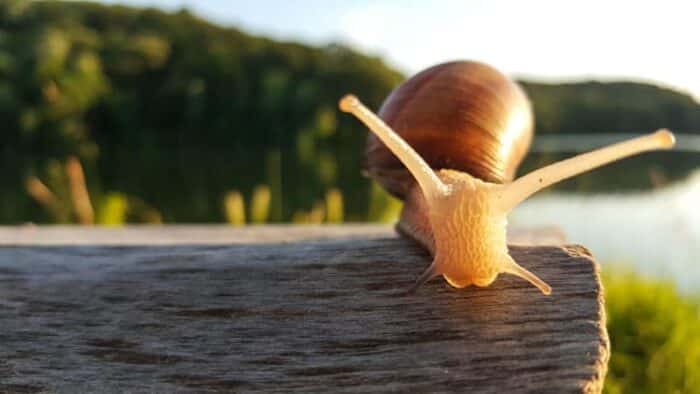
The first evidence of sleep in snails was documented in a 2011 study conducted by Canadian scientists.
Researchers noticed that pond snails exhibited a sleep-like state during which their foot, mantle, and tentacles were relaxed for about 22 minutes at a time.
Scientists placed these tiny creatures in tanks to observe their behavior. They used several methods, such as tapping their shells, to see how they react to appetitive and aversive stimuli.
By the end of the study (which lasted 79 days), researchers found that sleeping snails were less responsive to external stimuli compared to active snails.
They also discovered that snails went through seven bouts of sleeping over a 13- to 15-hour period. Once awake, they were active for 33 to 41 hours.
The snails in this study didn’t need to make up for lost sleep as humans do. Their awake time was characterized by continuous activity.
To sum up, snails sleep in bouts over a 13- to 15-hour period.
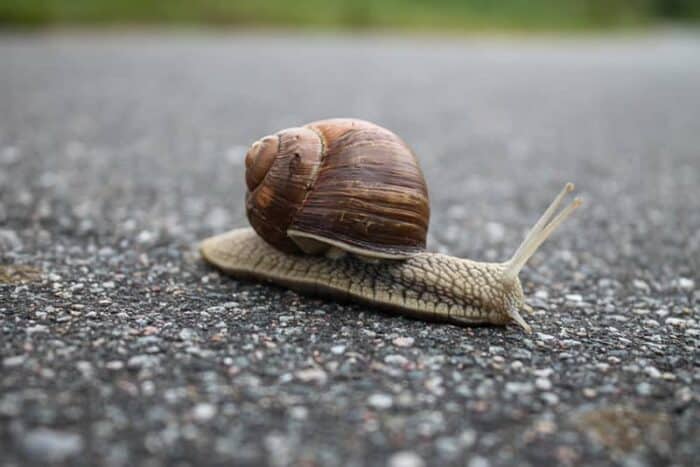
Since they carry their home on their back, they can fall asleep anytime, anywhere. When that happens, their muscles relax and the shell tends to hang loosely away from their bodies.
Can Snails Sleep for Up to Three Years?
A common misconception is that snails can sleep for up to three years.
As mentioned earlier, these small creatures can hibernate or estivate for several months or years at a time. But hibernation and estivation are not the same as sleep.
According to National Geographic, hibernation causes a decline in metabolism, heart rate, body temperature, and other physiological functions. This sleep-like state is known as torpor.
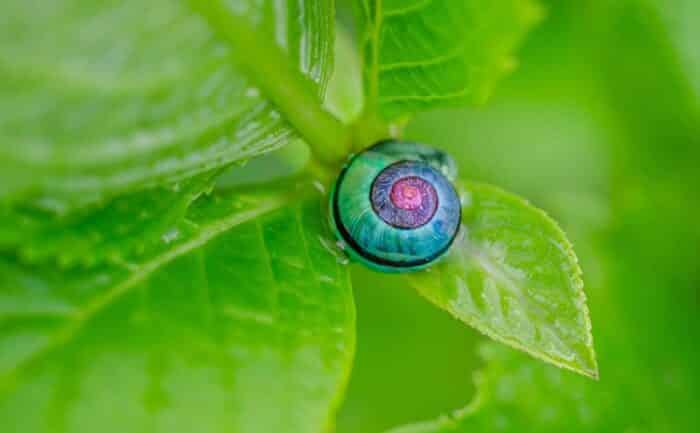
During hibernation, an animal’s basal metabolic rate is significantly lower than normal. Simply put, his body uses less energy to sustain itself. Some animals, such as dwarf lemurs, can go up to 10 minutes without breathing while in this state, reports National Geographic.
Hibernation usually occurs during the winter and can last anywhere between a few days and several months or years.
Estivation, on the other hand, takes place in the summer. Like hibernation, it’s characterized by a state of inactivity.
Snails adapt to the changes in weather conditions by hibernating or estivating, explains Arizona Pet Vet. Meanwhile, their bodies produce mucus that protects them from the elements. This sleep-like state may last for up to three years.
How to Tell If a Snail Is Dead or Just Sleeping
Some people keep snails as pets. Others take care of the snails in their backyard. Either way, you may want to know whether your pet snail is dead or just sleeping if he doesn’t move for several days.
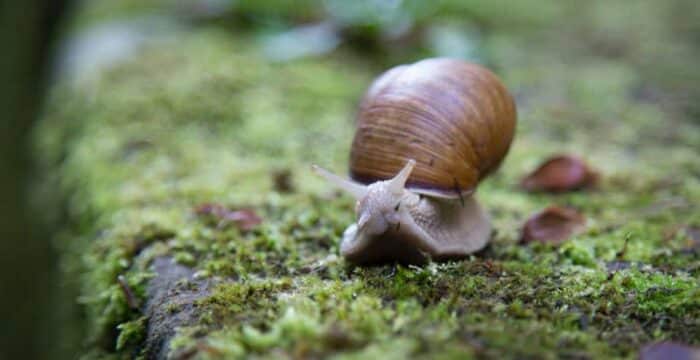
For starters, note that snails are unlikely to hibernate while in an aquarium. Since they sleep in bouts, they should be fairly active every few hours.
If you see your pet snail lying still for several hours, he may be ill or dead. A snail that’s floating on the water has likely died.
Watch out for these warning signs, too:
- The snail doesn’t stick to the plants, rocks, and other objects in his tank
- His body has a foul odor
- The shell is empty or appears weightless
- You don’t feel any resistance when tapping the shell
- The trapdoor of the snail is open
Ideally, check your pet snail at night.
Snails are nocturnal animals, meaning that they’re most active when the sun goes down. If your snail appears motionless, then he may have died.
Like all animals, snails decompose when they die. Their bodies release ammonia, which may affect the water pH. Remove any dead snails from the tank immediately and change the water.
Keep Calm and Don’t Panic
Sometimes, snails have excess air in their lungs or collect gas bubbles under their shells, which may cause them to float on the water.
If that happens to your snail, check his trapdoor to make sure it’s closed. This sign indicates that he’s alive. Release his back into the water right away.

Another way to tell whether your snail is dead or just sleeping is to examine his shell in front of a light source. If he’s alive, you should see his heart beating.
If you’ve just bought a snail, he may not move in his tank for the first two or three days. Be patient and try not to panic. Use the above tips to determine his condition.
Also, note that some snail species, such as assassin (Clea helena) snails, can remain motionless for days after eating. If you’re concerned about it, tap their shells gently or examine their bodies.
Remember that you can always take your pet snail to a vet. Place him in a small bowl or plastic bag filled with water and then head over to the nearest clinic.
Snail Need Sleep, Too
We hope we answered your question, “How long do snails sleep?” Most animals, including these small creatures, need proper rest to stay healthy and function at their peak. You may be surprised to find out that fish sleep, too.

If you’re thinking about keeping snails as pets, go ahead and give it a try. They are easy to care for and can be interesting to watch.
Speaking of pets, do you know how much sleep a dog needs? Puppies can sleep up to 20 hours a day. Adult dogs need less sleep, but they still get more shuteye than we do. See our post to find out more about your dog’s sleeping habits and the sleeping habits of different animal species.
Citations
- Can certain snails really sleep for 3 years? . AZPetVet. (2021, June 30). Retrieved March 1, 2022, from https://www.azpetvet.com/can-certain-snails-really-sleep-for-3-years/
- Can certain snails really sleep for 3 years? . AZPetVet. (2021, June 30). Retrieved March 1, 2022, from https://www.azpetvet.com/can-certain-snails-really-sleep-for-3-years/
- Culum Brown Professor. (2022, January 6). Curious kids: How do fish sleep? The Conversation. Retrieved March 1, 2022, from https://theconversation.com/curious-kids-how-do-fish-sleep-126018
- The Delaware Geological Survey. Snails and Slugs: Phylum Mollusca, Class Gastropoda | The Delaware Geological Survey. (n.d.). Retrieved March 1, 2022, from https://www.dgs.udel.edu/delaware-geology/snails-and-slugs-phylum-mollusca-class-gastropoda
- Facts about snails. Snail Facts and Information. (n.d.). Retrieved March 1, 2022, from https://www.snail-world.com/snail-facts/
- Hibernation vs. Brumation vs. Estivation. Discovery Place Nature. (2016, January 13). Retrieved March 1, 2022, from https://nature.discoveryplace.org/blog/ask-a-naturalist-hibernation-vs.-brumation-vs.-estivation
- LaFollette, A. (2020, November 19). How to tell if your water snail is dead. Pets on Mom.com. Retrieved March 1, 2022, from https://animals.mom.com/how-to-tell-if-your-water-snail-is-dead-7842036.html
- The Living World of Mollucs. Terrestrial snails and Slugs. (n.d.). Retrieved March 1, 2022, from http://www.molluscs.at/gastropoda/terrestrial.html?%2Fgastropoda%2Fterrestrial%2Fhelix%2Fpet_snails.html
- Project 1 water analysis in Florida (final) – project 1: Water analysis in Florida introduction. StuDocu. (n.d.). Retrieved March 1, 2022, from https://www.studocu.com/en-us/document/university-of-south-florida/general-chemistry-ii-laboratory/project-1-water-analysis-in-florida-final/9183539
- Stephenson, R., & Lewis, V. (2011, March 1). Behavioural evidence for a sleep-like quiescent state in a pulmonate mollusc, Lymnaea stagnalis (Linnaeus). The Company of Biologists. Retrieved March 1, 2022, from https://journals.biologists.com/jeb/article/214/5/747/33581/Behavioural-evidence-for-a-sleep-like-quiescent
- Wilcox, C. (2021, May 4). Animals don’t actually sleep for the winter and other surprises about the science of hibernation. Animals. Retrieved March 1, 2022, from https://www.nationalgeographic.com/animals/article/animals-hibernation-science-nature-biology-sleep



